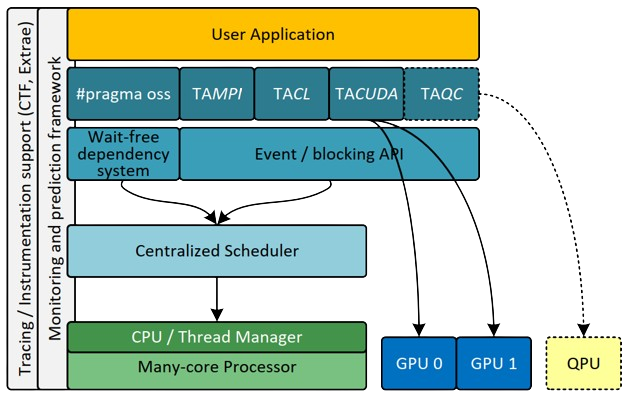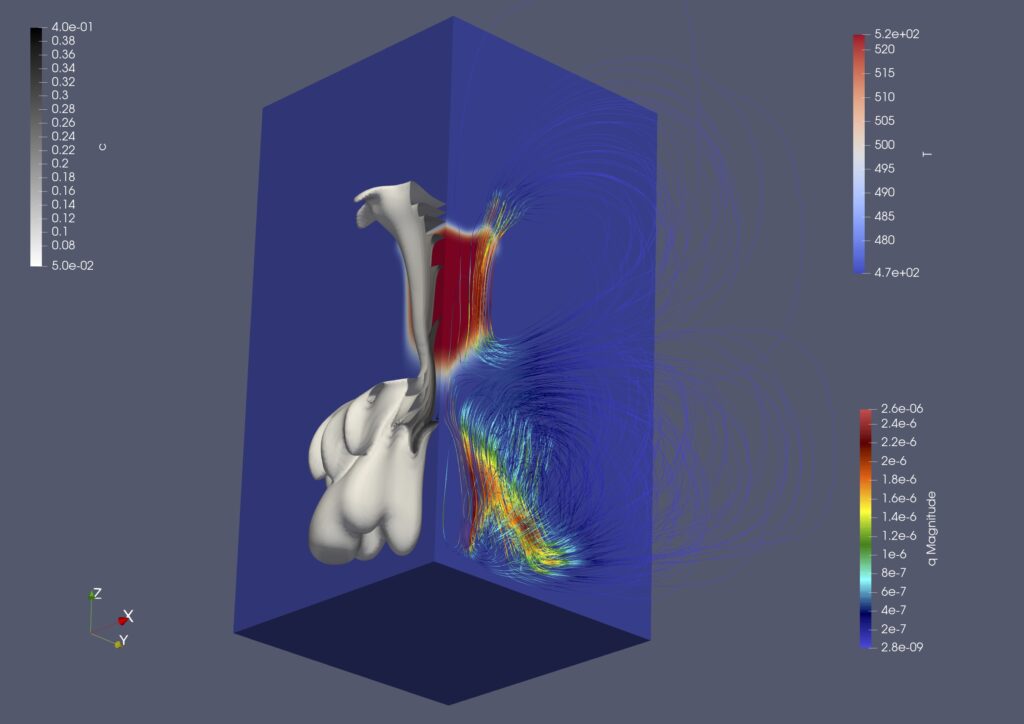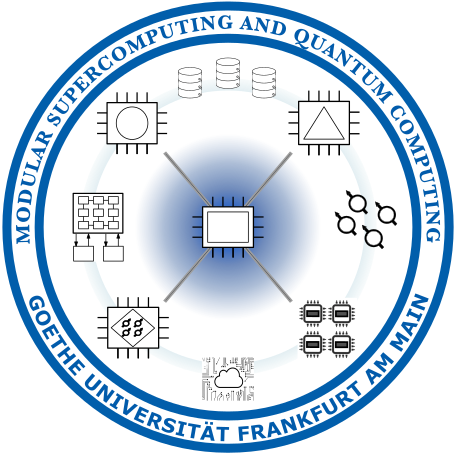Projects
Toward the Integration of Quantum Processors into the Modular Supercomputing Architecture
In this project, we demonstrate the seamless integration of quantum processors into the Modular Supercomputing Architecture (MSA) concept, leveraging their highly specialized nature, which makes them well-suited for specific applications. We illustrate how this integration can be accomplished by extending the OmpSs-2 programming model, previously utilized in the MSA context for other accelerators. In conventional code, functions can be offloaded to the Quantum Processing Unit (QPU) using pragma instructions. The quantum sources implementing these functions are stored in a separate file and compiled using a customized quantum compilation toolchain. At runtime, offloading occurs via a task-aware accelerator library in OmpSs-2, already compatible with other accelerators. This integration of QPUs into the MSA concept is particularly valuable for Variational Quantum Algorithms (VQA), necessitating close interaction between classical and quantum processors.


Joint Project: Hydrogeological Modeling on a Regional Scale (HYMNE II)
The computational program “distributed density-driven flow” (d³f++) enables the simulation of density-dependent groundwater flow and nuclide transport in the geosphere, incorporating all interactions currently pertinent for long-term safety analyses of large, hydrogeologically complex areas within feasible computation times. State-of-the-art efficient and scalable solution methods for parallel computers are employed. In the HYMNE II project, these methods are further developed, encompassing time parallelism, advancement of the LIMEX multigrid method, enhanced data adaptivity, and modular model coupling. HYMNE II is conducted in collaboration with partners from the Gesellschaft für Anlagenbau und Reaktorsicherheit and the company TechSim UG.

